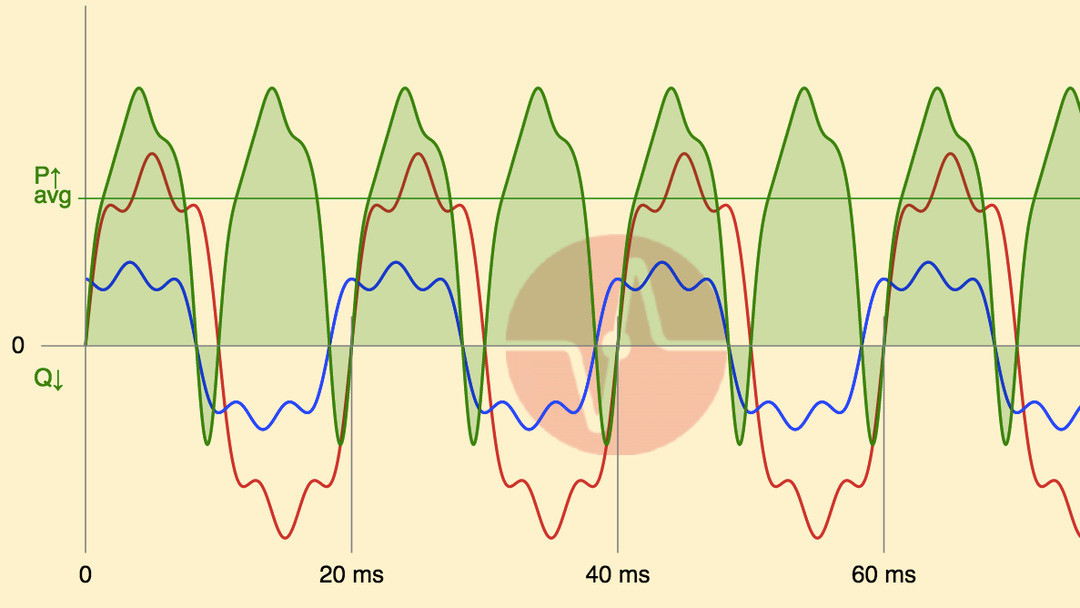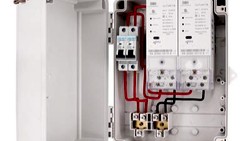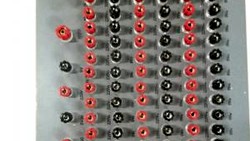Electricity is the lifeblood of modern society, powering everything from our homes to our industries. However, as our reliance on electricity has grown, so too has the complexity of our power grids. The addition of more electronic devices and renewable energy sources has resulted in an increase in harmonic distortion, which can lead to significant problems such as power quality issues, equipment failure, and reduced efficiency. This is where harmonic filters come in, as they are the secret to a healthy power grid. In this article, we'll explore what harmonic filters are, how they work, and why they are essential to maintaining a healthy power grid.

Understanding Harmonics
Harmonics are a type of distortion that occurs when a sinusoidal signal is distorted by the addition of frequency components that are multiples of the fundamental frequency. In other words, harmonics are additional frequencies that occur on top of the original waveform. The fundamental frequency in most power systems is 50 Hz or 60 Hz, depending on the region.
The presence of harmonics in a power system can cause a range of problems. For example, harmonics can cause electrical equipment to overheat, leading to damage and reduced lifespan. They can also cause interference with communication systems and reduce the efficiency of electrical equipment. Therefore, it is essential to control the level of harmonics in the power system.
Common praxis is to keep the THD (total harmonic distortion) under certain limits.
The voltage THD limit is 5 %. This means that the total of all the harmonics of the voltage waveform must be less than 5 % of the fundamental frequency. If the voltage THD exceeds this limit, it can cause problems for equipment that is sensitive to harmonics, such as transformers and motors.
The current THD limit is 3 %. This means that the total of all the harmonics of the current waveform must be less than 3 % of the fundamental frequency. If the current THD exceeds this limit, it can cause problems for the power grid, such as increased losses and voltage drop.
What Are Harmonic Filters?
Harmonic filters are devices that are used to mitigate the effects of harmonics in electrical systems. They work by selectively filtering out the harmonic frequencies that are present in the system. Harmonic filters are made up of a combination of capacitors, inductors, and resistors that are designed to create a tuned circuit that selectively filters out the harmonic frequencies.
There are two main types of harmonic filters: passive and active. Passive harmonic filters are made up of a combination of capacitors and inductors that are designed to create a tuned circuit that filters out specific harmonic frequencies. Active harmonic filters, on the other hand, use electronics to actively cancel out the harmonic frequencies that are present in the system.
How Do Harmonic Filters Work?
Harmonic filters work by creating a tuned circuit that selectively filters out the harmonic frequencies that are present in the system. The tuned circuit is made up of a combination of capacitors and inductors that are designed to resonate at a specific frequency. This resonance causes the circuit to have a high impedance at the resonant frequency, effectively blocking that frequency from passing through the filter.
The design of the harmonic filter is critical to its effectiveness. The filter must be designed to match the specific harmonic frequencies that are present in the system. For example, if the 5th harmonic is the most significant harmonic present, the filter must be designed to selectively filter out the 5th harmonic frequency.
The Importance of Harmonic Filters
Harmonic filters play a crucial role in maintaining a healthy power grid. They help to reduce the level of harmonic distortion in the system, which can cause a range of problems such as equipment damage and reduced efficiency. By reducing the level of harmonic distortion, harmonic filters can help to improve the quality of the power system.
Harmonic filters are also essential for ensuring that the power system meets regulatory requirements. In many countries, there are limits on the level of harmonic distortion that is allowed in the power system. Harmonic filters can help to ensure that the power system meets these requirements.
Applications of Harmonic Filters
Harmonic filters are used in a range of applications, including industrial, commercial, and residential. In industrial applications, harmonic filters are used to reduce the level of harmonic distortion in the power system, which can cause equipment damage and reduce efficiency. They are used in a range of industries, including steel production, chemical processing, and data centres.
In commercial applications, harmonic filters are used to reduce the level of harmonic distortion in the power system to improve power quality and reduce the risk of equipment damage. They are used in a range of applications, including hospitals, airports, and shopping centres.
In residential applications, harmonic filters are used to improve the quality of the power supply to homes. They can help to reduce the risk of equipment damage and improve the efficiency of electrical appliances. Harmonic filters are also used in renewable energy applications, such as solar and wind power systems, to reduce the level of harmonic distortion that is produced by these systems.
Challenges and Limitations of Harmonic Filters
Although harmonic filters are essential for maintaining a healthy power grid, they do have some limitations and challenges. One of the main challenges is that harmonic filters can be expensive to install and maintain, especially in larger industrial and commercial applications.
Another challenge is that harmonic filters must be carefully designed and matched to the specific harmonic frequencies that are present in the system. If the filter is not designed correctly, it may not effectively filter out the harmonic frequencies, leading to equipment damage and reduced efficiency.
There is also a limit to the level of harmonic distortion that can be effectively filtered out by harmonic filters. If the level of harmonic distortion is too high, it may be necessary to take additional measures, such as installing additional filters or upgrading the electrical infrastructure.
Takeaway
Harmonic filters are the secret to a healthy power grid. They help to reduce the level of harmonic distortion in the power system, which can cause a range of problems such as equipment damage and reduced efficiency. Harmonic filters are essential for ensuring that the power system meets regulatory requirements and improving the quality of the power supply.
Although harmonic filters have some challenges and limitations, they are an essential component of modern power systems. As our reliance on electricity continues to grow, the importance of harmonic filters will only increase. Harmonic filters are one of the many technologies that are helping to ensure that our power grids are reliable, efficient, and sustainable.
The first step is to analyse the harmonics content in your grid section. Our electronic energy meters and portable on-site test devices provide individual harmonic analysis and can help you gain the relevant data to determine whether harmonic filters are necessary in your grid. Contact us today to learn more about our harmonics data acquisition and take the first step towards optimizing your power grid's performance and efficiency.
Editor's note: This article was originally published in June 2023 and has been updated for comprehensiveness.





All comments are moderated before being published. Inappropriate or off-topic comments may not be approved.